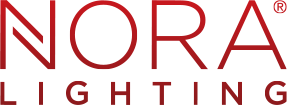What are Airtight Ratings?
Sealing the Deal: Understanding Airtight Ratings for LED Luminaires
In the world of LED luminaires, efficiency, longevity, and safety are paramount. While we often focus on lumen output, color temperature, and design aesthetics, there is a critical element that is equally as important: airtight ratings. An airtight LED luminaire is designed to prevent the infiltration of air into the building envelope. Understanding airtight ratings is essential for maintaining indoor air quality, enhancing energy efficiency, and ensuring the longevity of your lighting and HVAC systems.
What is an Airtight Rating?
An airtight rating for LED luminaires refers to the luminaire’s ability to create a barrier that prevents air, moisture, and other contaminants from passing through gaps or openings in the luminaire. An LED luminaire may be described as “airtight” once it successfully passes certification under the ASTM E283 standard. The primary objective of airtight luminaires is to prevent the exchange of air between spaces. If you are looking at a flat ceiling, there is no space for air to pass through between the room and ceiling. If you are looking to install lights to the ceiling, you will need to make a hole to install your new light. Doing so creates a passage for air to pass between the room and ceiling. Thus, having an air-tight luminaire will greatly reduce and/or eliminate the leakage of air from the room to the ceiling, and vice versa.
Choosing to utilize an airtight-rated luminaire may result in some key aspects and benefits:
- Energy Efficiency: Airtight luminaires minimize air leakage; in traditional non-airtight luminaires, openings and gaps around the luminaire or improper sealing can allow conditioned air, whether heated or cooled, to escape into uncontrolled spaces, such as attics or ceilings. Allowing conditioned air to leak into uncontrolled spaces results in energy loss and increased heating or cooling costs.
- Building Envelope Integrity: Airtight luminaires can aid in maintaining the integrity of the building envelope, which is the barrier that separates the interior conditioned spaces from the exterior environment.
- Improved Indoor Air Quality: Airtight luminaires can help reduce and prevent the infiltration of outdoor air pollutants, allergens, and even loose insulation into indoor spaces, which can contribute to better indoor air quality.
- Compliance with Building Codes: Many building codes and energy efficiency standards require airtight LED luminaires to meet specific airtightness criteria. Non-compliance can result in penalties and project delays.
Certain AirTight products may also be Chicago Plenum rated. These products are still certified as AirTight per the ASTM E283 standard, but also meet additional requirements outlined in the City of Chicago Electrical Code. These luminaires and housings have additional materials, including rated sealants, tapes, and gaskets, which help to further reduce the passage of air from the living space and the plenum space.
In conclusion, airtight LED luminaires are more than just a technical detail; they are a crucial component of an energy-efficient, healthy, and durable building. By selecting airtight-rated luminaires, you can contribute to energy savings, indoor air quality, and the overall performance of both your lighting system and your HVAC system. When it comes to illuminating spaces, sealing the deal with airtight luminaires is a decision that benefits both the environment and your bottom line.
Click this link to view all of Nora’s Air-Tight rated products
